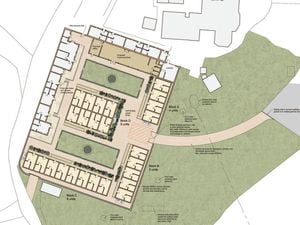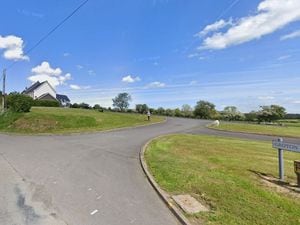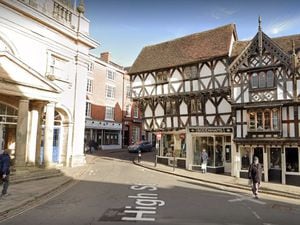Pictures: Attingham Park grounds on path to restoration
[gallery] The design and landscaping of the magnificent gardens at Attingham Park were commissioned by a lord in the late 1700s. But their 21st century restoration will be powered by a team of volunteers.
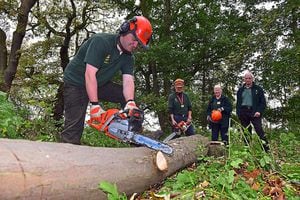
More than 20,000 trees and shrubs were planted at the behest of Noel Hill, later the first Lord Berwick, by landscaper Thomas Leggett in 1770 as he created a Georgian pleasure garden in the grounds of Attingham, in an area now known as the Mile Walk. The Mile Walk is a looped woodland path that visitors can still use today.
But the encroaching trees have blocked many of the original views, and the flowering shrub beds are no more, long since encroached upon by the park's vibrant undergrowth.
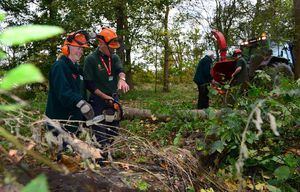
In its current state, it is far from how it was envisaged back in 1770. But under the watchful eye of the National Trust's team of parkland gardeners at Attingham in Atcham, the site's original features are being restored by a 500-strong team of volunteers as part of a 10-year project aiming to return the gardens to their original lustre.
"This is definitely a long-term project that we're just starting out with. We've done a lot of research into what the pleasure grounds here would have looked like," explains Attingham Park's visitor engagement manager Claire Tafft.
"We've got a big archaeological report which we've commissioned which shows us what would have been here. The original design was all about the views of the hills and having the light and shade, so you'd walk through darker bits and come out into lighter bits and it was atmospheric and floriferous. However, at the moment we've got lots of half-grown trees which have started to blur some of the original views which should have been here."
"We get asked a lot where our formal gardens are by our visitors, and to us it's almost like they're lost out there, so what we're trying to do is make it so that people can understand what it would have looked like and how the gardens would have connected the house and the stables and everything else back in the 1700s."
Working on the practical side of the restoration work is gardener Duncan Threadgold. Duncan has been working on the estate for three years and is bursting with enthusiasm for the restoration of the gardens. Alongside other National Trust staff, he leads an sizeable volunteer workforce.
"As it is now, it's almost a woodland walk, which isn't what the Mile Walk is about and it isn't what the gardens were originally designed to be. You should pick up the Mile Walk from the front of the house; that'll then draw you round to the walled garden and you pick up all these fantastic views around the house.
"So we're hoping to have different areas with different smells, and different senses from each of the new areas of the park. This end, the end nearest the house, will be heavily planted, and that will peter out as you go round the walk. As you go round it'll open out a bit more so you get these fantastic views as you go around. But from the public's point of view it'll be more formal, and it'll be more like a managed landscape once we're finished."
The bulk of the work on the project will be undertaken by Attingham's 500-strong team of volunteers. The contribution of this army of enthusiasts is a precious resource not only for this project, but also for the often unseen day-to-day maintenance tasks done on the vast site, something the staff at the estate are keen to point out.
"We'd be utterly stuffed without them, they're so important to us," says Duncan.
"It's a huge project and there's always opportunities for people to get involved. We'll need people to help us with planting in springtime; we'll be recruiting both for the practical side with the planting, but also with showing the public what we're up to and why it's important. It's easy to say to people, 'We're doing this and we're doing that,' but if you can show people then it really helps them to understand it."
Sue Piff, from Telford, has been volunteering on the gardening team at Attingham Park for six years and expects to be involved with the project from the start.
She said: "We've never done the Mile Walk because it's such a huge project. We're usually more involved with maintaining the woodland and keeping it tidy, so it's nice to have a big project like this that we can get out teeth into and perhaps see the end result. We do weekly things, but it's not as appreciated by the public perhaps, because it's such a huge site and so much of it is unseen.
"For me, it's about being here and making a difference. We're such a big happy crowd here that it's sort of a family, so for this new project, hopefully we'll look back and we'll be able to say, 'We did that.'"
For Claire Tafft, the project offers a chance to look back to the site's past whilst carefully maintaining the tapestry of features added over the years. It's a careful balancing act in order to keep the house relevant to current and future generations, but one she feels they can manage.
She said: "The site is used and enjoyed by a lot of people in a very different way now. We'd like to think that we stick to the spirit of the place and what it would have been like, within the framework that we've got. It needs to still be relevant to people, but there's been all sorts of input since the original design, from various lords and ladies of the house, and they've all added to it in various different ways. We'd love for people to be able to trace that history through the gardens and the buildings."
Clearing work is already under way, and the team expect to be able to start planting early next spring. The restoration of the Mile Walk will be 10 years in the making.

